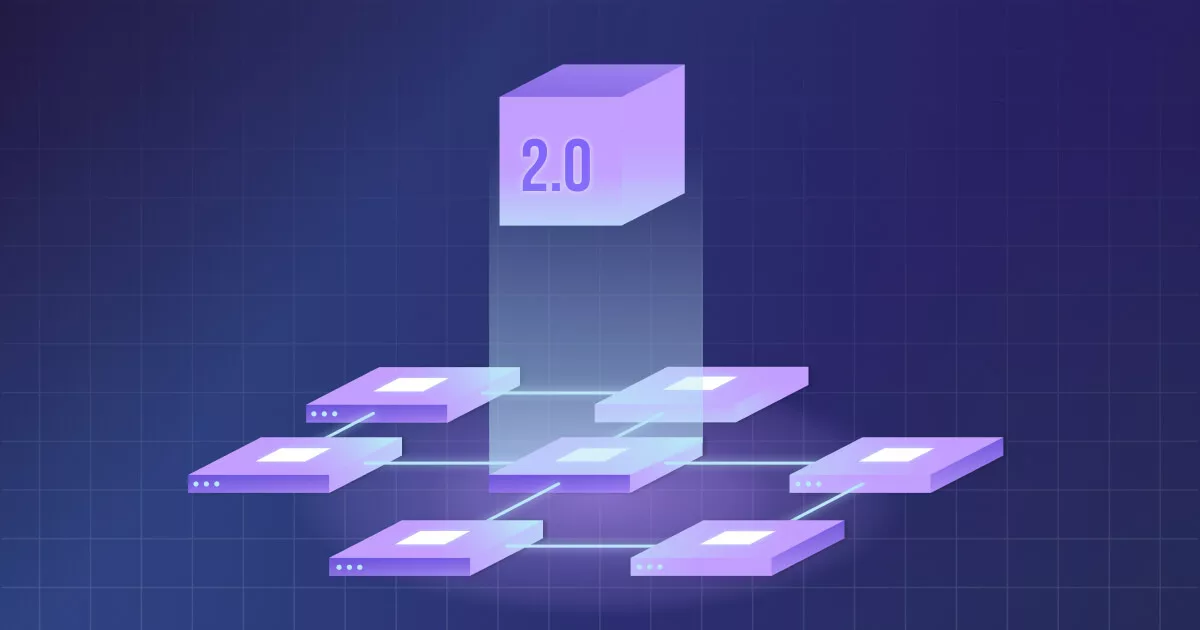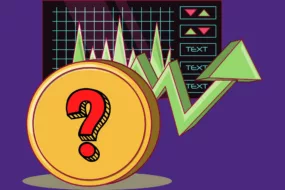
Blockchain technology has been around for over a decade now, and it’s no secret that it has revolutionized the way we think about digital transactions. However, the first generation of blockchain technology had limited capabilities and its primarily function was financial transactions. Enter blockchain 2.0, which builds on the original technology and introduces features like smart contracts, scalability improvements, and interoperability.
This new generation of blockchain technology has opened up a wide range of possibilities beyond financial transactions. Its potential applications include everything from supply chain management and digital identity to voting systems and decentralized applications.
If you don’t know what blockchain 2.0 is, hang tight, we will discuss everything about in detail.
What Is Blockchain 2.0?
The term “blockchain 2.0” refers to the evolution of blockchain technology beyond the original Bitcoin blockchain.
The first generation of blockchain technology, which includes Bitcoin, focused on creating a decentralized, immutable ledger for recording transactions. However, with the advent of Ethereum in 2015, a new wave of blockchain technology emerged that was capable of executing smart contracts and decentralized applications (dApps). This second generation of blockchain technology is “blockchain 2.0”.
It expands on the capabilities of the first generation by enabling more complex use cases beyond simple value transfer. Smart contracts and dApps allow for the automation of business processes and the creation of decentralized marketplaces, among other things.
Why Blockchain 2.0?
The need for blockchain 2.0 arose from the limitations of the first generation of blockchain technology. While the original Bitcoin blockchain was revolutionary in its creation of a decentralized, tamper-proof ledger for recording financial transactions, it had several limitations that made it unsuitable for other use cases.
Some of the limitations of the first generation of blockchain technology include:
- Limited functionality: The first generation of blockchain technology was primarily designed for recording transactions and did not have the capability to support more complex use cases such as smart contracts.
- Limited scalability: The original Bitcoin blockchain had a limited transaction processing capacity, which made it unsuitable for handling large-scale transactions.
- High transaction fees: At one point, average transaction fees on Bitcoin reached 60 USD, which made it impractical for use in microtransactions.
- Lack of interoperability: Different blockchain networks could not communicate with each other, making it difficult for them to work together.
How Is Blockchain 2.0 Better?
Blockchain 2.0 solves the problems of the first generation of blockchain technology in several ways:
- Functionality: Blockchain 2.0 introduces smart contracts that enable more complex financial transactions, allowing for the automation of business processes. For example, supply chain management, identity verification, and voting systems.
- Scalability: Blockchain 2.0 introduces new network architectures and consensus mechanisms that can process a greater number of transactions in a given period of time. For example, Ethereum, the most popular blockchain 2.0 network, uses Proof-of-Stake, which is less energy-intensive than the Proof-of-Work consensus mechanism used by Bitcoin.
- Reduced transaction fees: Blockchain 2.0 networks often have lower transaction fees than first-generation blockchain networks. This is partly due to the use of more efficient consensus mechanisms but also due to the development of layer-two scaling solutions, such as sidechains that allow for off-chain transactions and lower fees.
Blockchain 2.0 addressed these limitations by introducing smart contracts, which enabled more complex transactions. These networks are also more scalable and efficient. Additionally, the introduction of new consensus mechanisms, such as Proof-of-Stake, helped reduce transaction fees and improve network security.
Overall, the need for Blockchain 2.0 came from the desire to create a more versatile, scalable, and secure blockchain infrastructure.
Applications of Blockchain 2.0
Blockchain 2.0 has opened up a wide range of potential applications beyond financial transactions, and some of them include –
- Decentralized applications (dApps): Blockchain 2.0 has enabled the creation of decentralized applications. These are like any other applications that you use but are built on blockchain. dApps can be used for a wide range of purposes, from social media and gaming to supply chain management and finance.
- Smart contracts: Smart Contracts are self-executing contracts that execute themselves once the predefined conditions are met. They can be used in a variety of industries, including real estate, insurance, and supply chain management.
- Digital identity: Blockchain 2.0 can be used to create a secure, decentralized identity system where individuals can control their own identity information and choose who has access to it. This can be used in a variety of industries, such as healthcare, finance, and government.
- Supply chain management: Blockchain 2.0 can be used to create a more transparent and efficient supply chain by tracking products from the point of origin to the end consumer. This can help to prevent fraud, improve traceability, and reduce costs.
- Voting systems: Blockchain 2.0 can be used to create a more secure and transparent voting system where votes can be recorded in a decentralized manner and cannot be tampered with. This can help to reduce voter fraud and improve trust in the democratic process.
Overall, blockchain 2.0 has opened up a wide range of potential applications for blockchain technology beyond financial transactions, and we are yet to realize the full potential of this technology.
Conclusion
In summary, blockchain 2.0 represents a significant step forward for blockchain technology. It builds on the strengths of its predecessor while introducing new features that enhance its capabilities. With smart contracts, greater scalability, and better interoperability, blockchain 2.0 has the potential to transform a variety of industries, from supply chain management to voting systems. It will be fascinating to see how blockchain 2.0 continues to develop and evolve in the years to come.
FAQs
1. What is the blockchain 2.0 version used for?
We use Blockchain 2.0 for a variety of applications beyond financial transactions, including decentralized applications, smart contracts, digital identity, supply chain management, and voting systems. It builds on the strengths of its predecessor while introducing new features that enhance its capabilities.
2. What is the difference between blockchain 1.0 and 2.0?
Blockchain 1.0 primarily focused on financial transactions and had limited capabilities. Blockchain 2.0 introduced features such as smart contracts, scalability improvements, and interoperability, enabling a wider range of applications including but not limited to identity management, supply chain management, etc.
3. What is the difference between blockchain 1.0 and 3.0?
While Blockchain 1.0 only carries out financial transactions, Blockchain 3.0 focuses on providing a more comprehensive solution to real-world problems, such as governance, energy, and data management. It combines blockchain technology with other advanced technologies. Blockchain 2.0, at the same time, focuses on providing smart contracts, scalability improvements, and interoperability.





